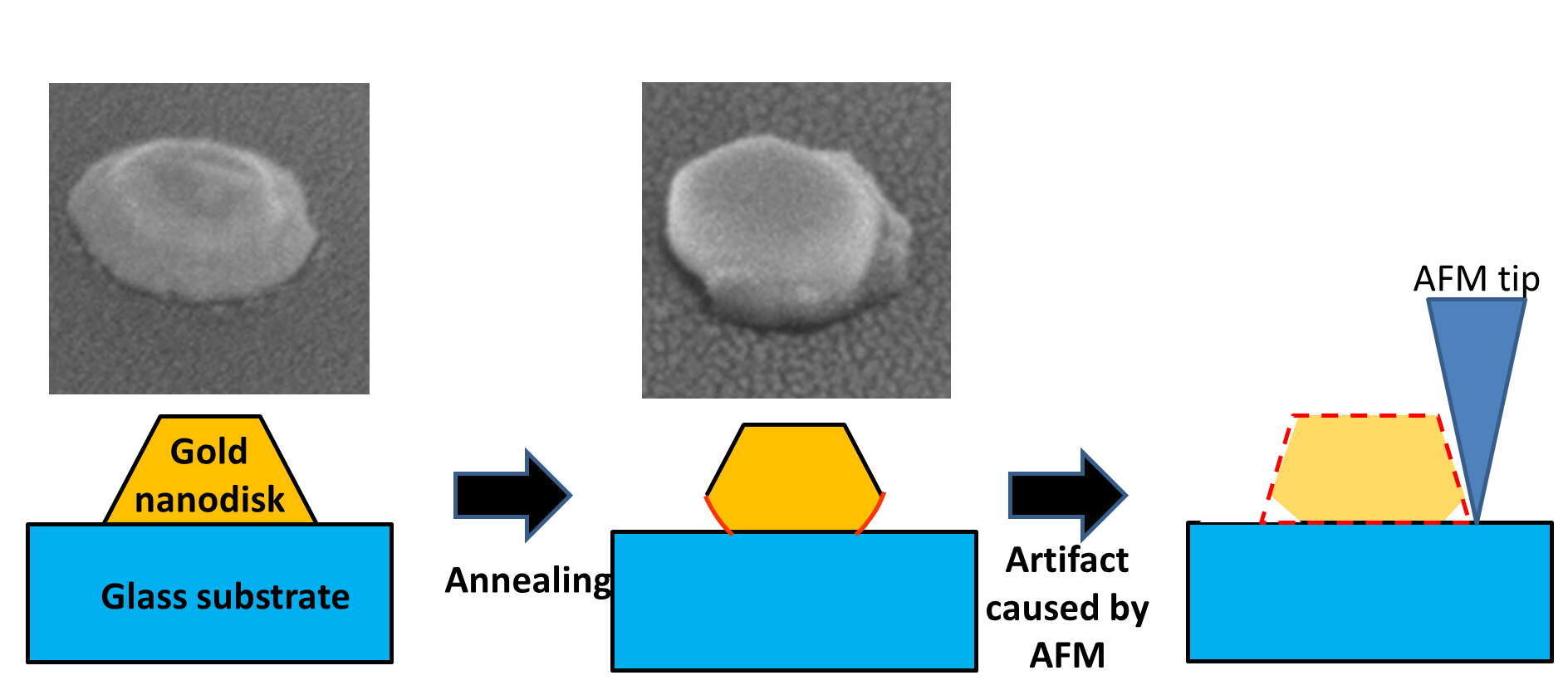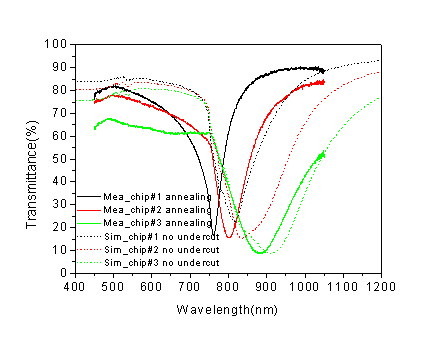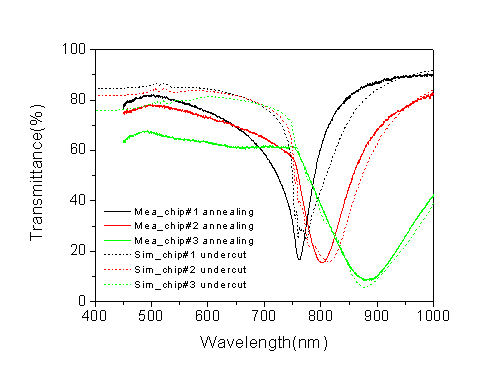
Correction of Localized Surface Plasmon Resonance Spectra from AFM Artifacts by Inspection the Structure Undercut
Localized surface plasmon resonance (LSPR) spectrum is very sensitivity to the surrounding dielectric environment and has great potential for biosensing application. To fabricate a high sensitivity and figure of merit (FoM) sensor with cost-effective method is an important issue. In this work, a 405 nm Laser writer system based on the thermal lithography process was proposed to overcome the diffraction limit. After thermal evaporating and lift-off process, a gold nanodisk array with diameter less than 200 nm was realized. In order to increase the sensitivity and FoM of our LSPR chip, we modified the size of nanodisk by annealing process to tune the LSPR frequency close to the Rayleigh anomaly resonance frequency to excite the Fano resonance mode. The geometric characteristics of the nanostructrues were analyzed by using atomic force microscope (AFM). However, the undercut feature of nanodisk after annealing process cannot be resolved by AFM. The misunderstanding of structure geometry caused great deviation between simulations and experiments. To overcome this problem, a focused ion beam (FIB) system and scanning electron microscope (SEM) was used to analyze the cross section of nanostructures. After modified the nanodisk structure with undercut in three-dimensional finite-difference time-domain (3D-FDTD) simulation, the resonance frequency is red-shifted and well coincident with measurement results.

Figure 1. Schematic diagram of undercutting effect of our LSPR chip after annealing process and artifact structure caused by AFM measurement
(a) (b)
(b)
Figure 2. The comparison of measurement and simulation results (a)without consideration of undercut (b)with consideration of undercut
Powered by Eventact EMS